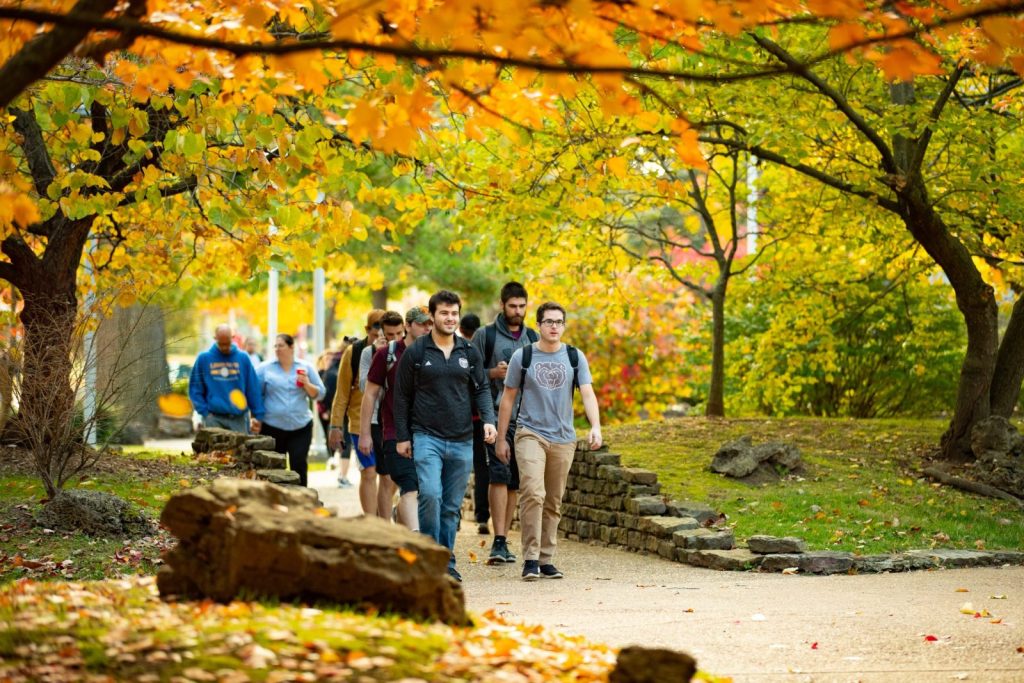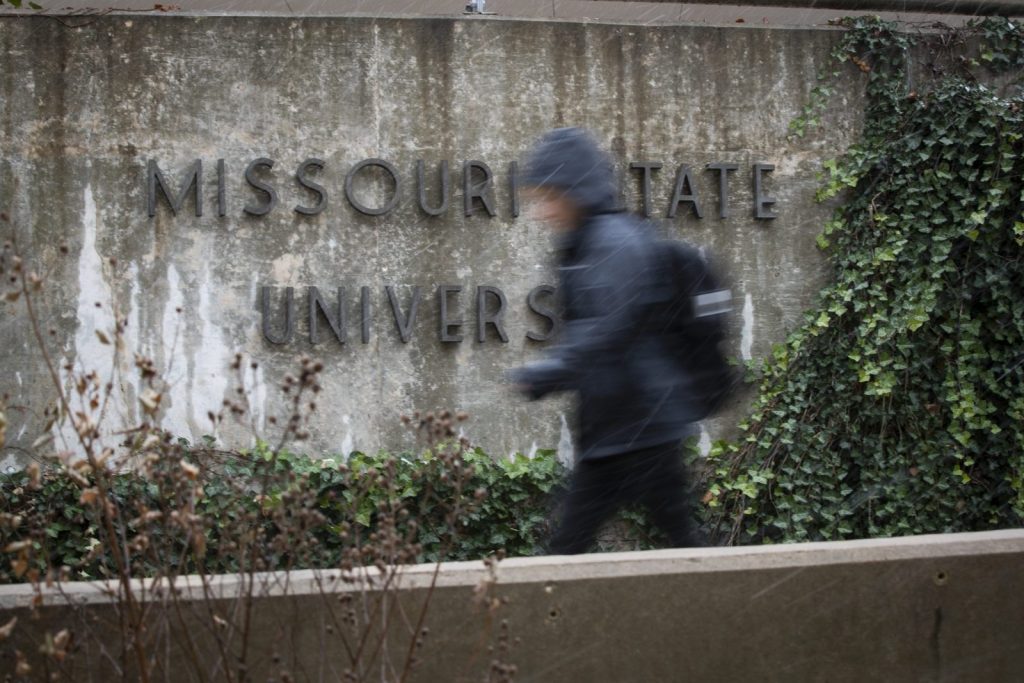For the fourth time in the past five school years, year-over-year enrollment dropped at Missouri State University. In an effort to draw more students to MSU, fall 2023 freshmen who are Federal Pell Grant-eligible won’t have to pay a dime to be Bears, Smart announced Monday during his State of the University address.
Smart also celebrated record annual fundraising totals generated by the Missouri State University Foundation, as well as external funding that totaled over $60 million for the second consecutive year. He credited $9.4 million in new revenue through increases in tuition and fees, as well as state appropriations, for a 4 percent across-the-board pay raise and retention bonuses.
But future compensation, he noted, is directly related to enrollment and state appropriations. And then he presented the first of several slides showing the university’s latest enrollment data.
MSU enrollment is down overall, but Smart sees pockets of good news in the data
Over the past two falls, enrollment at MSU’s Springfield and West Plains campuses collectively decreased by over a thousand students, a decline that aligns with nationwide trends. Inside MSU’s numbers are decreases among both new and continuing undergraduates, Smart said, as well as enrollment increases in several student categories that have been recent priorities.
“We have 23,618 students on the Springfield campus this fall,” Smart said. “That's down 311 students from last year. Our continuing undergraduates decreased by 517 students, and we have a smaller freshman class joining us this year than a year ago.”
Smart pointed out several student categories that saw enrollment growth from last fall to this fall. More dual credit students (433), international students (258) and graduate students (41) are on campus compared to last year. Increasing graduate enrollment and bringing more international students back into the fold after pandemic restrictions eased have been focal points over the past year, Smith said. However, those students tend to take fewer classes than a typical 28-credit-hour-per-year degree-seeking undergrad.
Combine that with a decreasing number of degree-seeking undergrads overall, and it accounts for a 3.6-percent drop in total credit hours being taken — even though the campus only saw a 1.3-percent drop in enrollment. The decrease in credit hours is estimated to reduce MSU revenue by about $6 million this year, Smart said.

While enrollment declined, Smart reported an uptick in first-to-second year retention rates among MSU students. Smart said 75.9 percent of students stayed at MSU past their first year at the university in 2021-2022, compared to 75.2 percent the previous school year. Smart told the audience that the MSU Board of Governors has set a retention goal of 82.2 percent to be met by 2026.
Looking ahead, Smart said the two new MSU leaders who joined him onstage, Zora Mulligan and John Jasinski, are tasked with cutting $5 million from the 2024 fiscal year academic budget. Of that amount, Smart said they anticipate re-investing $1.8 million to grow the university and become more efficient in a changing environment. Jasinski, MSU’s interim provost, said he and Mulligan, MSU’s executive vice president, have asked MSU department heads to send them suggestions for ways to reinvest in their academic programs. They are also working with EAB, an education consulting firm, to examine enrollment data. Smart said Jasinski and Mulligan will look at what programs have potential for growth to meet market demands, while adding that it is important to keep existing arts and sciences programming in place to develop citizen scholars. Smart said, “We cannot just cut expenses if we are to thrive.”
That line of thinking led to a recruitment effort with a significant selling point: free tuition and fees.
MoState Access Award designed to draw in area students with financial hardships

Students who have not earned a bachelor’s degree or higher can qualify for a Federal Pell Grant if they prove exceptional financial need. The maximum Pell Grant amount for the 2022-2023 school year is $6,895, which would cover the lion’s share of in-state tuition for Bears. The average cost of tuition and fees for an undergrad at Missouri State is $8,604, according to the university.
Mulligan on Monday announced the MoState Access Award would cover any remaining tuition and fees not covered by the Pell Grant or other scholarships for new undergraduate students starting next fall. Mulligan said in a news release that the scholarship will “have a monumental effect on many students who are making the decision about whether they can afford to attend college or not.” During the State of the University event, she said it will start off with funding from the university budget. If it draws enough interest, MSU leaders will explore more funding options.
“It really is a program that we're starting as, I don't want to say a pilot, because it's intended to be longer-term than that, but really just to see, what is the interest?” Mulligan said. “What do we need to do to make the program more attractive, to make sure it is reaching the target audiences.”
Smart said that if the scholarship draws about 70 new Pell-eligible students to campus, MSU breaks even on its investment in the program. If more freshmen than that take advantage of the free tuition and fees that would be predominantly funded with federal grants, it becomes a revenue generator for MSU, Smart said.
With the announcement of the scholarship Monday, the university also launched a website for the MoState Access Award. Prospective students interested in the scholarship must first file a Free Application for Federal Student Aid form by Feb. 1. If they qualify for even a partial Federal Pell Grant, and meet the qualifications listed below, they could become part of the next wave of MSU Bears.
How to qualify for a MoState Access Award
On Monday, Missouri State University leaders announced a new scholarship designed to cover any remaining tuition and fee costs not covered for new students who qualified for Federal Pell Grants. To meet MSU’s qualifications, a student must be:
- An incoming freshman or new transfer student starting in fall 2023
- A Missouri resident
- A U.S. citizen or eligible non-citizen
- Eligible for a Federal Pell Grant
- Seeking an undergraduate degree
- Enrolled full-time (at least 12 credit hours)
Students who have all their tuition and fees covered through Pell, Access Missouri, or other traditional institutional scholarships will not receive the MoState Access Award.

